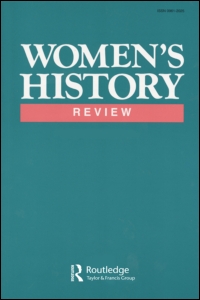
Women's History Review
Volume 14, Issue 2, Jun 2005
Pages 285-300
- DOI: 10.1080/09612020500200433
- Print ISSN: 0961-2025
- Online ISSN: 1747-583X
Towards the formation of a professional identity: women artists in Greece at the beginning of the twentieth century
Art Historian
Abstract
In nineteenth-century Greece women of the upper and middle classes were usually occupied with some form of art destined for the private sphere of their familial or friendly circle or sold for philanthropic purposes. The foundation of a female class for painting and sculpture at the state School of Arts in Athens in 1894 seems to have given women the chance to demand and assure equal academic opportunities with men in the first decade of the twentieth century, despite strong objections from their opponents on the issue of the life-class. For some women this was the first step away from amateurism and towards professionalism and was to be followed by a series of initiatives, including the maintenance of a well-organised atelier, steady participation in exhibitions and artistic unions, the adoption of modern art tendencies and publicity through the press, all of which guaranteed their professional engagement with art. Next to contemporary feminist demands for emancipation and female attempts to enter traditionally male professions, women artists' endeavours contributed, as can be detected in some painted and photographic portraits of Flora, Laskaridou and Asprioti, to the formation of the image of the New Woman as well as to the promotion of female artistic individuality.